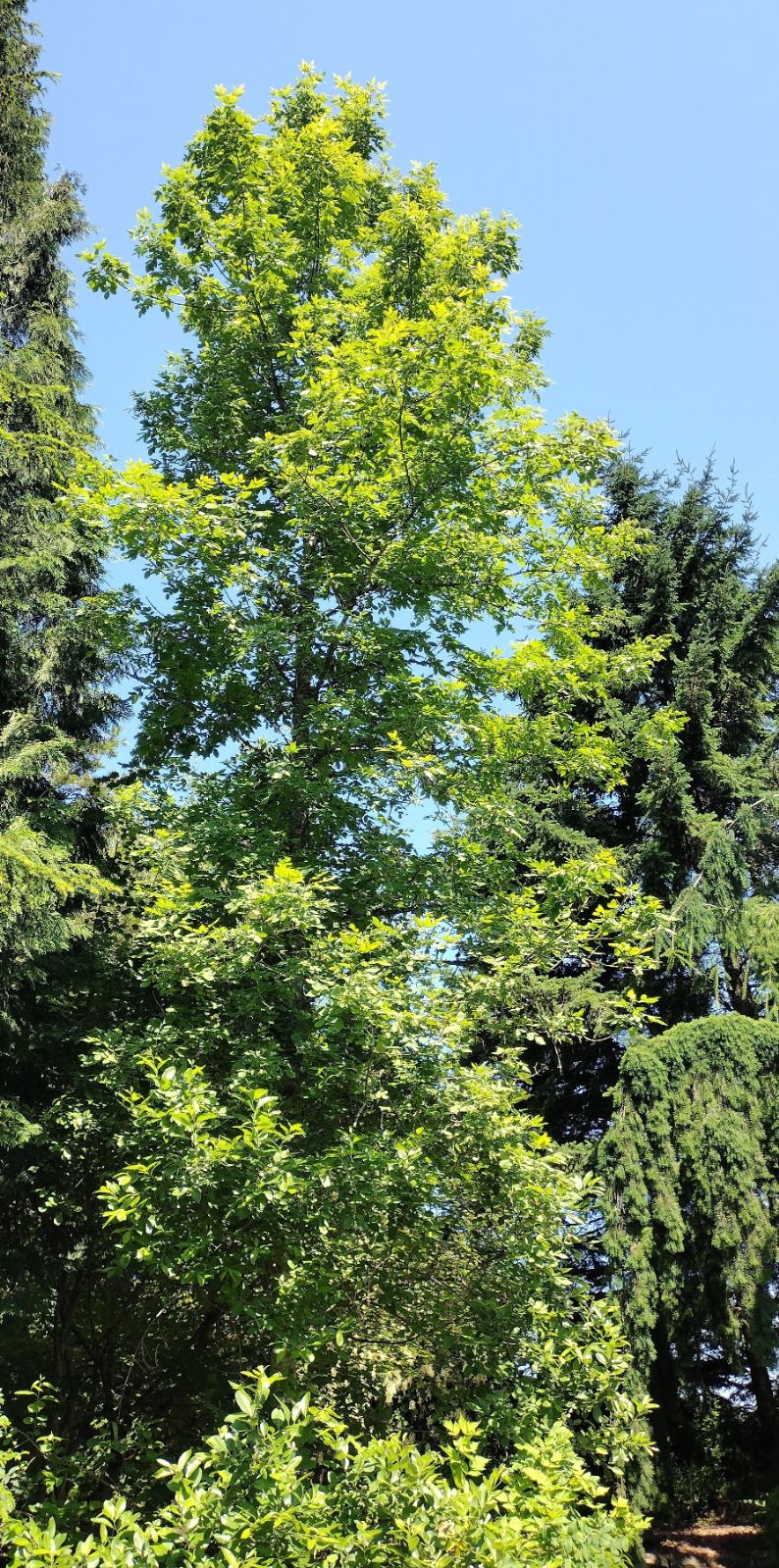Fraxinus latifolia
Credits
Article from Bean's Trees and Shrubs Hardy in the British Isles
Recommended citation
'Fraxinus latifolia' from the website Trees and Shrubs Online (treesandshrubsonline.
Genus
Common Names
- Oregon Ash
Synonyms
- F. oregona Nutt.
- F. americana subsp. oregona (Nutt.) Wesmael
- F. pennsylvanica subsp. oregona (Wesmael) G. N. Miller
Other taxa in genus
- Fraxinus americana
- Fraxinus angustifolia
- Fraxinus anomala
- Fraxinus biltmoreana
- Fraxinus bungeana
- Fraxinus caroliniana
- Fraxinus chinensis
- Fraxinus cuspidata
- Fraxinus dipetala
- Fraxinus elonza
- Fraxinus excelsior
- Fraxinus floribunda
- Fraxinus griffithii
- Fraxinus holotricha
- Fraxinus lanuginosa
- Fraxinus longicuspis
- Fraxinus mandshurica
- Fraxinus mariesii
- Fraxinus nigra
- Fraxinus obliqua
- Fraxinus ornus
- Fraxinus oxycarpa
- Fraxinus pallisiae
- Fraxinus paxiana
- Fraxinus pennsylvanica
- Fraxinus platypoda
- Fraxinus pubinervis
- Fraxinus quadrangulata
- Fraxinus rotundifolia
- Fraxinus sieboldiana
- Fraxinus sogdiana
- Fraxinus spaethiana
- Fraxinus syriaca
- Fraxinus texensis
- Fraxinus tomentosa
- Fraxinus 'Veltheimii'
- Fraxinus velutina
- Fraxinus xanthoxyloides
A tree up to 80 ft high; young shoots reddish brown, rough with minute warts, more or less downy, sometimes densely so. Leaves 6 in. to over 1 ft long; leaflets five, seven or nine, oval or oblong, 2 to 5 in. long, 1 to 2 in. broad, tapered or sometimes rounded at the base, contracted at the apex to a short or slender point, margins entire or obscurely toothed, dark green and with thin down above, pale and densely downy beneath; main-stalk very pale, downy, grooved above; stalk of the terminal leaflets up to 1 in. long; lateral leaflets very shortly or not at all stalked. Flowers without petals, produced on the previous year’s shoots. Fruits 11⁄4 to 2 in. long, 1⁄3 in. wide towards the apex; wing extending almost to base of body.
Native of western N. America, where it is a valuable timber tree. It was discovered by Douglas in 1825, but does not seem to have been introduced until many years after. There are two specimens of F. latifolia in the Ash collection at Kew, one pl. 1914, 76 × 53⁄4 ft, and the other, probably some forty years older, 80 × 73⁄4 ft (1969).
F. latifolia is allied to F. pennsylvanica, of which it is treated as a subspecies by Miss Miller in her monograph on the American ashes, but is easily distinguished by the stalkless lateral leaflets. The same character can usually be relied on to distinguish the Oregon ash from the velvet ash (F. velutina), but hybrids and intermediates between the two occur south of the 37th parallel (G. N. Miller, op. cit., pp. 19–21 and 41, and see also Munz & Laudermilk, El Aliso, Vol. 2, pp. 49–62).
From the Supplement (Vol. V)
specimens: Kew, pl. 1914, 72 × 61⁄4 ft (1976) and an older tree, 66 × 81⁄4 ft (1978); Regent’s Park, London, Outer Circle, 58 × 71⁄2 ft (1981); Reading University, Wells Hall, 56 × 51⁄2 ft at 3 ft (1978); Talbot Manor, Norfolk, pl. 1949, 52 × 51⁄2 ft (1978); Edinburgh Botanic Garden, 49 × 4 ft (1981).

